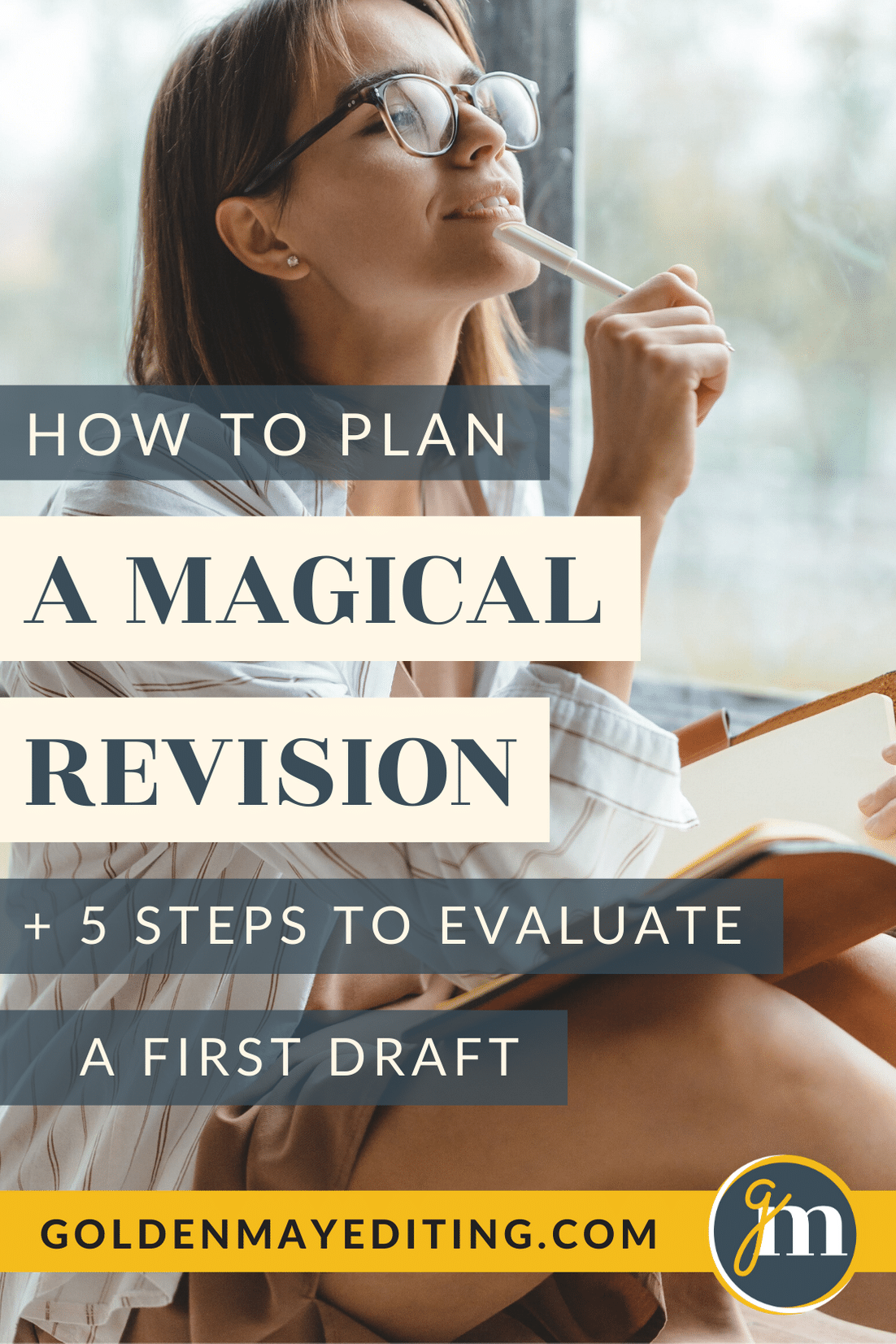“A story cannot be told about a protagonist who doesn’t want anything, who cannot make decisions, whose actions effect no change at any level.” —Robert McKee, Story
You finished your first draft! That is a huge accomplishment. Do you know how many people in the world wish they could say that? Do you know how many unfinished manuscripts are out there gathering dust in the world? You’ve actually completed a draft of a novel. It’s real. It’s out there. So go celebrate and do your happy dance!
Once the giddy feelings of accomplishment wore off (and they usually do), we bet that you started fretting about the work ahead. You started to sweat, your pulse spiked, and the voices began to whisper “What is this piece of junk anyway?” in your mind. Your resistance is in overdrive.
Stop right there. For your first draft, your only job was to finish it. That’s it.
Revisions are where the magic happens.
Early drafts are explorations of the story you want to tell, revisions are where you figure out how to tell it. A lot of writers claim to ‘hate editing,’ and a lot of this angst comes from the fear of looking at their baby first draft and realizing it’s not perfect—but this is unavoidable. It’s impossible to write a perfect first draft. Let go of your unreasonable expectations for your first draft. It’s a beautiful, raw, presentation of your creativity. Allow it to be that, then let it go, because the next step is to do a high-level analysis of what you wrote and paint a picture of what it can become.
Follow these 5 steps to evaluate your first draft baby and make a plan to turn it into a well-rounded, publishable adult manuscript.
1. Find your story point
The very first thing you need to do when analyzing a draft is figure out the point of your story. A Story Point is a single, concise statement/argument usually reflective of your story’s themes. For example, the point of Pride and Prejudice by Jane Austen is ‘Love can overcome obstacles of class.’ The point of A Game of Thrones by George R.R. Martin is ‘There is no room for honor in the game for power’ and the point of An Ember in the Ashes by Sabaa Tahir is ‘Your power lies in your hands, and yours only.’
If you have a main character who changes at all (and you should!), then you’re inevitably making a point, whether it’s intentional or not. The decision made at the story’s climax, and the consequences of that decision, will reveal something about what you (the author) believe about how the world works. Framing your story around your Story Point argument focuses your vision and helps you home in on how your main character is going to change. As they make decisions, overcome obstacles, experience consequences, succeed or fail, their journey of change should ultimately prove your point.
Your Story Point may not be clear in your first draft, or maybe you sense that you’re trying to make several points. The key to a strong revision is nailing the Story Point that you want to drive your story, so you can use it to clarify how you’re going to revise. You’ll then use your Story Point as a guidepost to informing every other decision you make as an author.
2. Identify your character’s Internal Obstacle
Once you know your Story Point, you need to make sure that your character’s arc—the internal change they’ll go through during the story—is aligned with the point you want to make.
To start, identify your main character’s Internal Obstacle—the misbelief, lie, or false worldview that they’re struggling against. It’s the thing they must unlearn, or overcome, at the end of the story. It should be in contrast to the story point, because by overcoming it (or failing to) they will prove the Story Point.
For example, in Pride and Prejudice, Lizzy Bennet struggles with an Internal Obstacle belief that ‘wealth makes people arrogant.’ When she apologizes to Mr. Darcy at the end, after realizing she was wrong, she proves the Story Point that ‘Love can overcome obstacles of class.’
In looking at your story, identify what internal struggle your character is facing. Is that obstacle in conflict with your story point? If your character doesn’t seem to have an internal struggle, take a look at your story point and see if you could create one for them that’s in conflict with the story point you’re trying to make—something they can fight against throughout the book.
3. Determine the big beginning and ending moments
Because the Internal Obstacle is the core of your character’s arc, use it to determine if you’re starting and ending the story in the right place.
Where to Begin: The story should open with the character’s Internal Obstacle belief firmly implanted in their mind. They are living their life in ways influenced by this false belief. The character’s journey of change should start when they are forced to confront their Internal Obstacle in a serious way for the first time. This is often called the Catalyst or the Inciting Incident. For example, Pride and Prejudice opens with the attractive (and wealthy) Mr. Bingley and Mr. Darcy coming to town and hosting a ball. When they catch Lizzy and her sister’s eyes, Lizzy is forced to confront her belief that all wealthy people are selfish, and she chooses to hold onto that belief.
Where to End: The story then ends when the main character proves they’ve overcome their Internal Obstacle at the climax. For example, Pride and Prejudice ends with Lizzy Bennet realizing that she was wrong in her judgments of Mr. Darcy all along. When she apologizes to him, she proves that she’s overcome her prejudice toward wealthy people.
Identify where, in your draft, your character can begin their story and how their life is influenced by their Internal Obstacle flaw. Then, determine when they come face to face with their Internal Obstacle for the first time. Next, identify (or plan, if you don’t have it yet) the scene at the end of the story when your character makes a decision that proves they’ve overcome (or failed to overcome) their Internal Obstacle—that’s where the story ends! The consequences of this decision should prove your story point.
FURTHER READING: To dive deeper into crafting your story’s climax, see our blog Draft A Killer Climax.
4. Map your draft to a reverse outline
Now that you know your story’s point, your character’s Internal Obstacle, and where you need to start and end, it’s time to create a reverse outline. A reverse outline is when you map your current scenes to a plotting tool, in order to find the structural holes in your story. To start, find a story plot outlining tool that works for you.
Some plot outlining tools we’ve used and loved include:
Once you’ve picked an outlining tool, take stock of the scenes you already have in your draft and map them to the various spots in the outline. Even if you already have an outline, this exercise is beneficial because it forces you to evaluate where your scenes are falling in the story’s structure and whether or not they fit their roles in the outline.
This may be difficult for you, because as you map, you’ll probably realize that some scenes need to be tweaked, added, or even cut. Don’t get discouraged. This is a critical part of the process, and when it feels overwhelming, remember—every change you make will improve your story. What’s not thrilling about that!?
5. Evaluate Scene Decisions
You have an outline! Congrats! You’ve already come so far in your revision planning. Now, before you jump into rewriting, it can be extremely useful to take a deeper look at each scene you plan to write and ensure that each one has:
- A goal
- A problem
- A choice
- Consequences
In order for your story to engage readers, each scene needs to be driven by a character goal and end with a difficult choice that has long-lasting consequences. Pro tip! Try to make every scene’s choice pit your character against their Internal Obstacle in some way, since that struggle is the core of your story.
FURTHER READING: For more on scene structure, check out our blog on Scene Structure.
Start Rewriting!
You’ve got a revision plan now! Take a deep breath, and dive in. Revel in the joy of improvement, rather than any shame that you didn’t ‘get it right’ the first time or grief over the loss of what you have to remove. This is where the magic of your story will come alive!
We completely get how difficult this can be, especially if you’re doing it on your own. If you get lost in this process, or begin to feel overwhelmed or discouraged, the best thing you can do is turn outward instead of inward. As book coaches, we can guide you through this revisions process. Together, we can come up with a plan so you’re never directionless or feel alone. Schedule a FREE 30-min call with us today to learn more and get started on tackling your revisions with confidence! Let us help you grow that next draft with confidence.











Leave A Comment